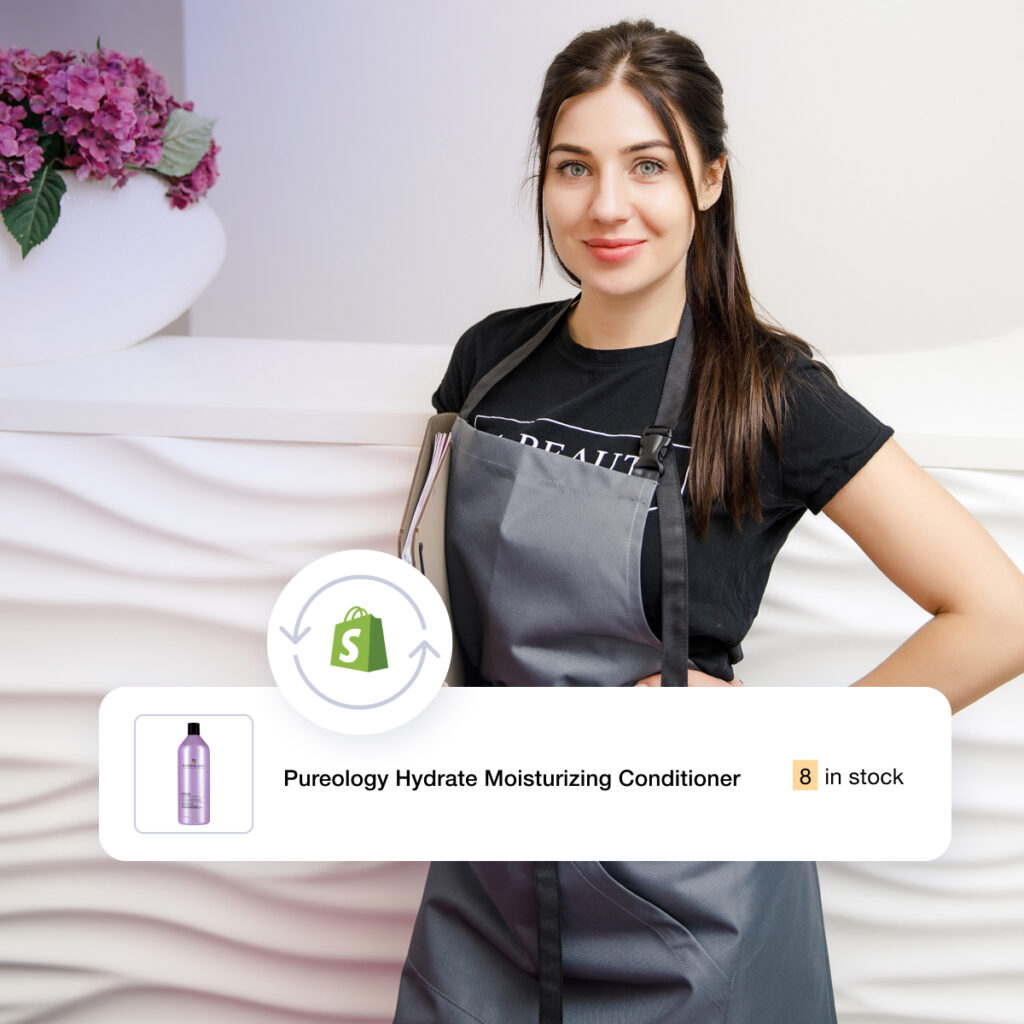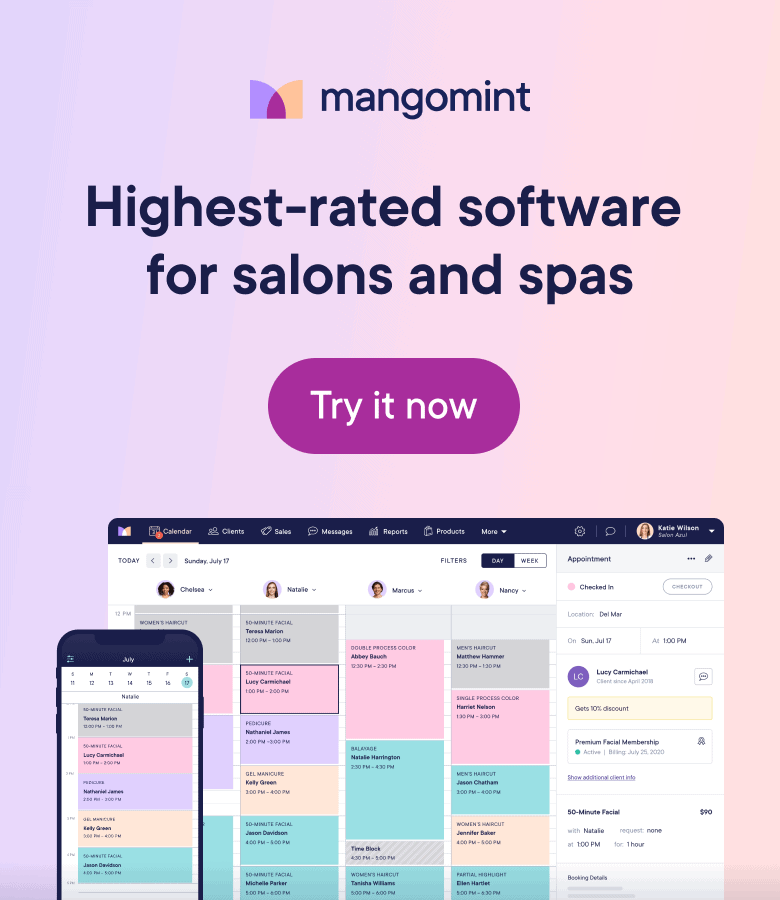For hair salons, retail product sales can represent up to 70% of total revenue. Yet many salons are missing out on a crucial opportunity: selling these products online.
Today your our clients want the convenience of purchasing their favorite hair salon products whenever and wherever they choose. By adding online retail to your business, you can boost sales, reach more customers, and compete with mass retailers.
This complete guide shows you how to set up and grow your hair salon’s online retail presence, from choosing the right platform to marketing your products effectively.

Watch Our Detailed Video Guide
Before we dive in, if you want a quick breakdown of this topic, check out Episode 22 of Marketing 100 where we break down the essentials of selling salon products online and how to choose the right platform for your beauty business.
Why Hair Salons Need an Online Store
While retail sales can account for 30-70% of turnover in sales-oriented markets like the USA, many salons are still missing out on this crucial revenue stream. The good news? Over 63% of customers reported purchasing retail items from beauty businesses in the past year, showing strong demand for professional products.
With giants like Ulta and direct-to-consumer brands making professional products more accessible than ever, salons have a unique advantage: personal relationships with clients and expert knowledge of their specific hair care needs. This expertise allows you to provide personalized product recommendations that mass retailers simply cannot match.
But, according to a 2024 beauty industry trends report, salons are diversifying their businesses by incorporating multiple revenue streams, with retail being the most significant. Over half of customers (63%) reported purchasing a retail item from a beauty business in the past year (Source).
Some countries are better than others in this respect. Indeed, individual salons, barbers, and spas will be better than others, but on average, the percentage of income achieved from selling products directly to clients remains staggeringly low.
In the more sales-orientated USA, retail may account for as much as 30%-70% of turnover; in the UK, it’s typically as low as 3%-10%.
However, following a service or treatment, there’s a reluctance to sell the same products that have made their client look and feel sensational in the first place.
The reality is that most hairdressers, beauticians, and therapists feel uncomfortable ‘selling.’
And no amount of product prescription pads, convincing salons to see themselves as consultants, commission incentives, or positioning selling as an extension of their professional expertise has yielded much in the way of change.
When it comes to online sales, the picture is similar. Compared to other retail sectors, the salon industry is behind the curve, with many salons still lacking a website, let alone an online store.
During the pandemic, which saw salon businesses close indefinitely, those that offered clients a way of buying products online for home delivery or even via a collection service could at least generate some much-needed income. Those that didn’t, and still don’t, are at a competitive disadvantage.
So how can we fix this problem? How can salons change the situation for the long term, and how can clients buy online from salons just as they do from other retailers?
What do you need to Start Selling Online?
You have two main options for selling products online. First, many salon software platforms offer built-in online store capabilities, which keep inventory synchronized between your physical location and online store. While this option is simpler to manage, the features are often limited.
The second option is using a dedicated e-commerce platform like Shopify. This provides more powerful features and room for growth, though it requires additional setup. For serious retail growth, this is often the better choice.
Start simple by focusing on your top-selling products and gift cards. Consider creating seasonal bundles or client-favorite collections. Many salons find success by starting with in-store pickup options before expanding to shipping, which eliminates complex logistics while still providing convenience for clients.
The platform I recommend you use for building your online store is Shopify. This is the easiest yet most powerful solution for business owners like you. Many big brands started on Shopify and run large successful online businesses today.
Shopify also offers integration support. In fact, you can integrate Shopify directly with Mangomint – the best salon software right now.

Mangomint’s Shopify integration allows you to keep your inventory up to date between your online and physical location.
I have created a list of the best salon websites. And as part of that list, you’ll also see examples of salons and spas that are built on top of Shopify while using Mangomint for online booking and gift card sales.
Marketing Your Hair Salon’s Online Store
The key to successful online retail is effective communication with your clients. Use email marketing to remind clients when they might be running low on products or to announce new arrivals. For example, a simple message like:
Hi Sarah! It’s been about three months since you purchased your favorite styling spray. Ready for a refill? Order online now and pick up during your next visit!
In the salon, train your staff to mention the online ordering option during product recommendations. Make the transition from in-person to online shopping seamless by displaying QR codes that link directly to your store.
Once your store is set up and ready to go, it’s time to let your clients know.
Email and social media marketing will likely be you focus in the beginning. And as you start to learn how the store works and what sells, you’ll likely want to move to paid marketing alternatives.
Read my salon marketing guide to learn more about email and social media marketing.
Building Long-Term Salon Retail Success
Consider implementing a membership program that offers special discounts on online purchases. This can help drive recurring revenue while building client loyalty. Track key metrics like online versus in-store sales and repeat purchase rates to continuously improve your offering.
Your goal is to make product purchasing as convenient as possible while leveraging your unique expertise as a salon professional. By combining personalized service with digital convenience, you can create a retail experience that keeps clients coming back.
Mastering Hair Salon Retail Product Sales
I also recommend you watch my video with Tomas from Samotsoh, who shares valuable insights into how his salon approaches retail sales. (Below, I’ll explain how these tips can also be applied online.)
How to Apply These Insights Online
While Tomas’s comments focused on in-salon consultations, the principles he shared can also be applied to online retail. Here are some ideas:
Use product descriptions to solve problems: Instead of just listing product features, use product descriptions to explain how the product can solve common hair or beauty problems. For example, a product description could say, “This lightweight serum helps tame frizz and add shine to dry hair,” rather than just listing the ingredients.
Offer personalized product recommendations: Consider adding a quiz or consultation feature to your online store that asks clients about their hair type, concerns, and goals. Based on their responses, you can provide personalized product recommendations. This can help recreate the consultative experience of an in-salon consultation.
Provide educational content: Create blog posts, videos, or social media content that educates clients on how to use products and achieve certain looks at home. This can help establish your salon as an authority and build client trust. It can also help them see the value of the products you offer.
Focus on honesty and transparency: Be truthful and transparent in all your marketing and sales efforts. Clearly explain what each product does and who it’s best for. Be upfront if a product has any drawbacks or isn’t suitable for certain hair types. By being honest and transparent, you can build trust with clients and increase the chances of making a sale.



